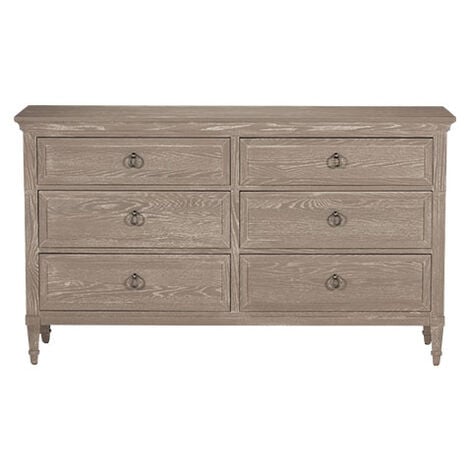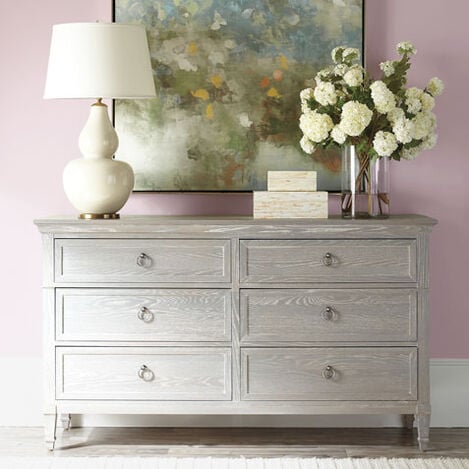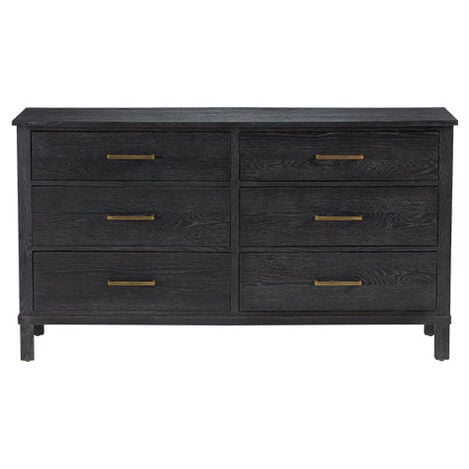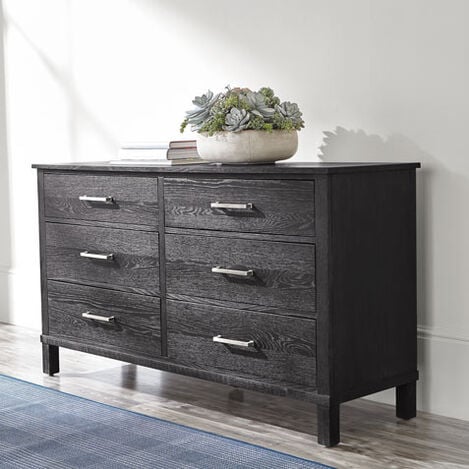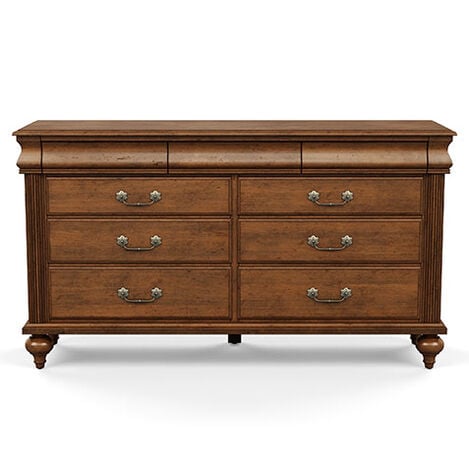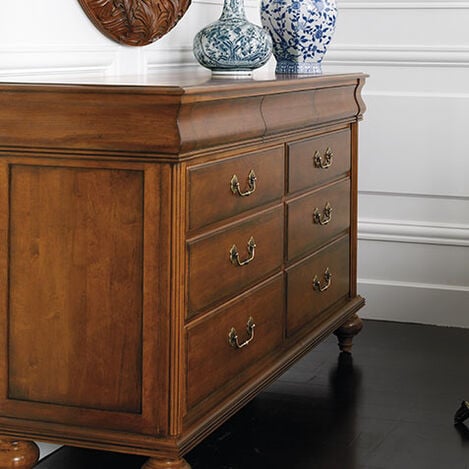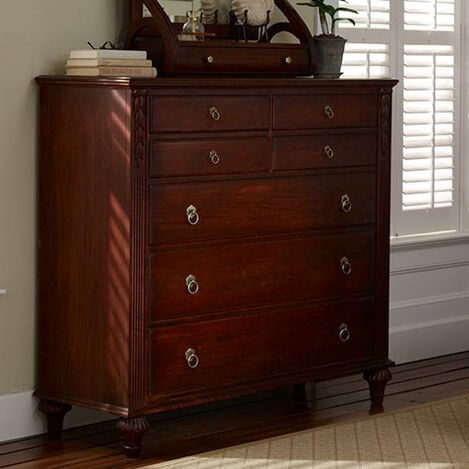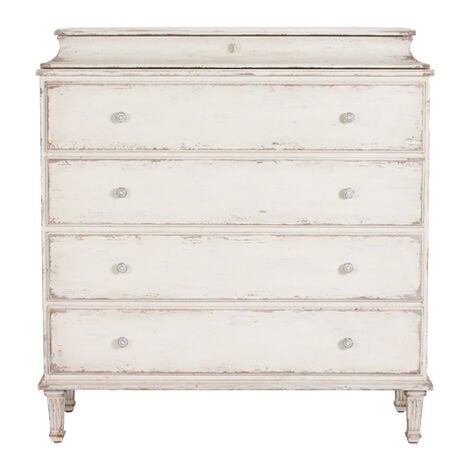Designer FAQs: Dressers and Chests for Bedrooms and More
What is a dresser vs. a chest of drawers?
Have you ever had a drawer pull apart at the joints after just a few years of use? Sagging wood as the bottom separates from the sides? Constant catching and crookedness when opening and closing? Then don't settle for a cheap dresser. Ethan Allen dressers and chests are crafted using sturdy dovetail joinery for drawers, so they stay together after years of repeated use. We use either Hettich undermount drawer slides or dovetailed wooden center slides, so that drawers open and close smoothly and maintain their alignment.
Many manufacturers have one standard drawer size that goes into any dresser; even if the dresser is 16" deep, the drawer may be only 12" deep. Every Ethan Allen dresser and chest comes with custom-sized, full-depth drawers, so you're getting the maximum amount of storage from every inch.
For dressers and chests made in our own workshops, we use logs sourced in the U.S.—many near our Vermont workshops—and we dry the wood in our own kilns before crafting your furniture. This level of care keeps your wood from splitting or cracking and ensures long-lasting durability and beauty.
Before I make a purchase, how should I measure for my dresser or chest?
For exterior measurements—
- Depth: Make sure your dresser isn't so deep that it will jut out in front of a door frame or crowd your other furniture. If you need space to walk between your dresser or chest and your bed, measure between the wall and the edge of the bed. Leave enough space for your dresser depth PLUS at least 12" of open space for walking.
- Height: If you want five or six drawers worth of storage space, you can choose either a tall chest or a wider double dresser. If you want to hang a mirror, a piece of art, or your flat-screen TV over your dresser, go with something shorter. (For safety reasons, we do not recommend placing a TV on top of your dresser.)
- Width: Chests or dressers that are the width of a single drawer are great for smaller spaces; a tall dresser is a terrific space saver. If you have plenty of floor space, choose a six-drawer or even nine-drawer dresser and leave your wall free for photos or décor.
To preview one of our dressers in your space before you order it, try our EA inHome® app. Required disclaimer: The dimensions may not be 100% exact, but you’ll get a ballpark preview of how the piece will fit and how it will look within the context of your room.
Where should I place my dresser or chest when I arrange my bedroom?
The most common placements we see in bedrooms are across from the foot of the bed, on a wall parallel with the side of the bed, or in a corner of the room. You can even substitute a small chest for a night table if you need storage space right next to your bed.
Dressers and chests aren’t just for bedrooms; you can place them in entryways, at the end of the hallway, or behind your living room sofa. In general, you can swap a chest for a console table if you need more storage; just make sure you have space to accommodate the depth of the chest.
You can always try our 3D Room Planner to preview a new room arrangement that includes your dresser, or you can ask any of our designers for help.
I hear a lot about tipover accidents that happen with dressers. How can I make sure my dressers and chests are safe?
At Ethan Allen, we safety test our dressers for stability and load-bearing capacity, and we don't sell products if they don't meet our standards—no exceptions. We also include tipover hardware that we recommend using to attach your dresser to the wall. Click here to learn more about preventing tipover accidents or to order a free tip restraint kit.
Do you have more questions? Click the Designer Chat icon, or contact your local Design Center—we’re happy to help!








